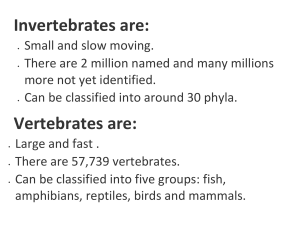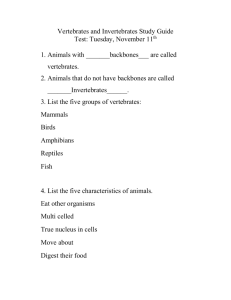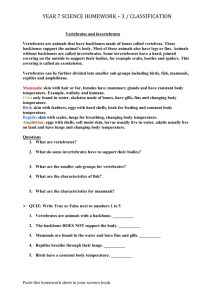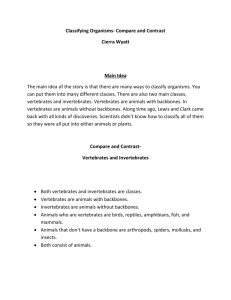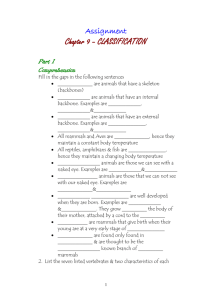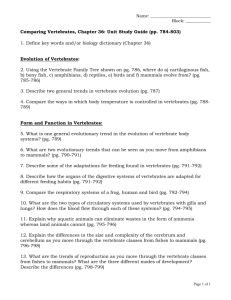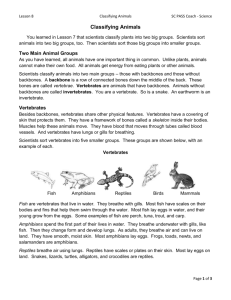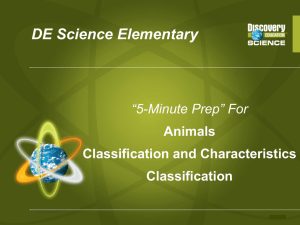Vertebrate Classification Worksheet: Year 6/7 Science
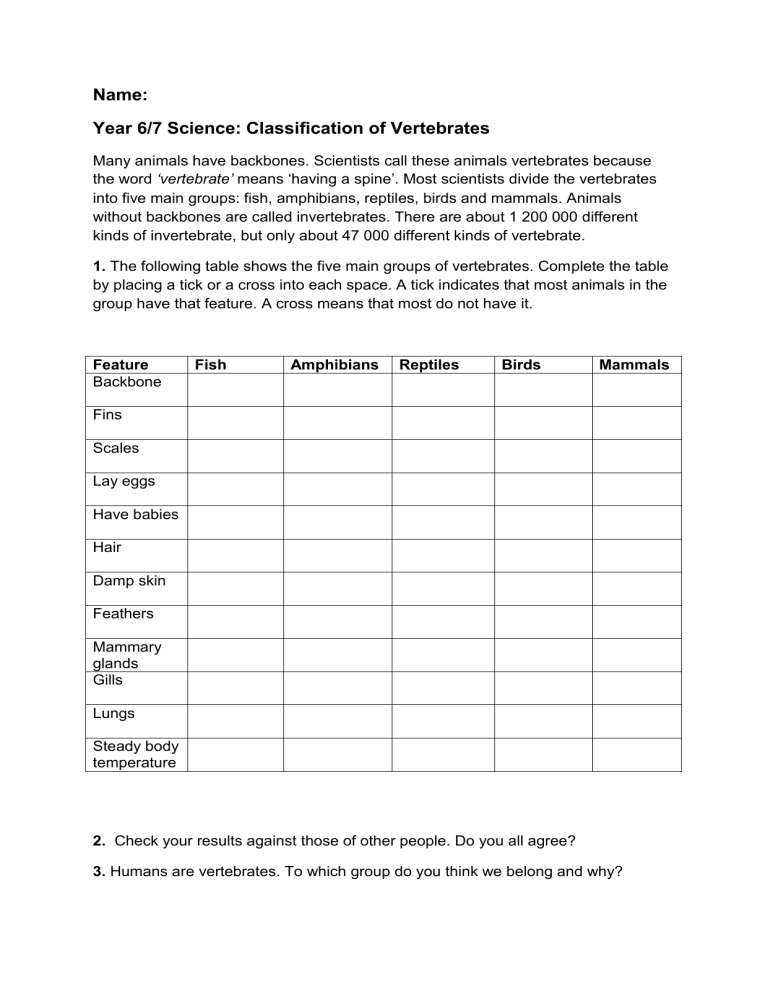
Name:
Year 6/7 Science: Classification of Vertebrates
Many animals have backbones. Scientists call these animals vertebrates because the word ‘vertebrate’ means ‘having a spine’. Most scientists divide the vertebrates into five main groups: fish, amphibians, reptiles, birds and mammals. Animals without backbones are called invertebrates. There are about 1 200 000 different kinds of invertebrate, but only about 47 000 different kinds of vertebrate.
1.
The following table shows the five main groups of vertebrates. Complete the table by placing a tick or a cross into each space. A tick indicates that most animals in the group have that feature. A cross means that most do not have it.
Feature
Backbone
Fish
Fins
Scales
Lay eggs
Have babies
Hair
Damp skin
Feathers
Mammary glands
Gills
Lungs
Steady body temperature
Amphibians Reptiles Birds
2. Check your results against those of other people. Do you all agree?
Mammals
3.
Humans are vertebrates. To which group do you think we belong and why?
4. What is the difference between a fish and a reptile?
5.
Do all animals with four limbs have backbones? Explain your answer.
6.
Do all animals with backbones have four limbs? Explain your answer.
7.
To which group does each of these animals belong: dog, tortoise, hen, salmon, rat and whale.
8.
How is the bat different from most other mammals?
9.
Why is the dolphin placed in the same group as the bat?
10.
Name five invertebrates. What features have they got in common?

